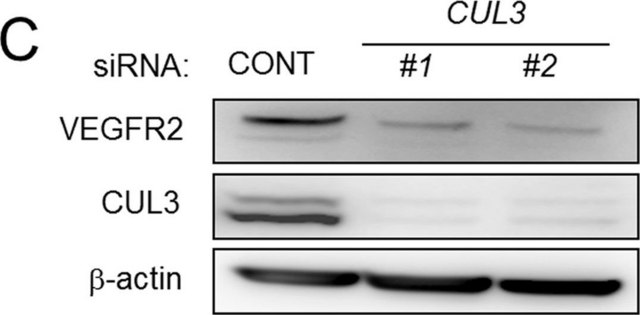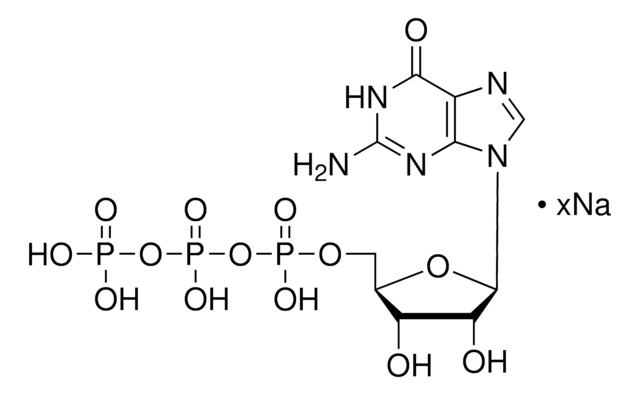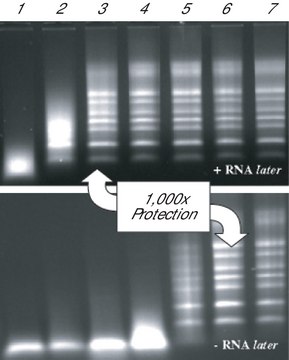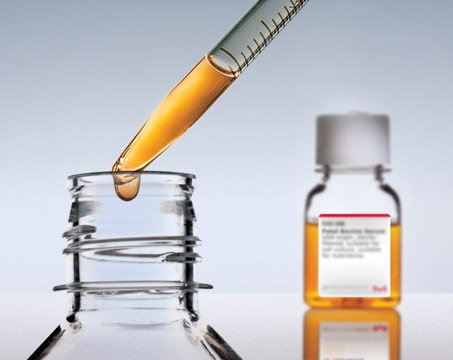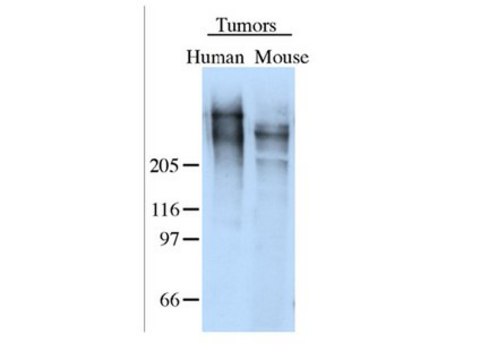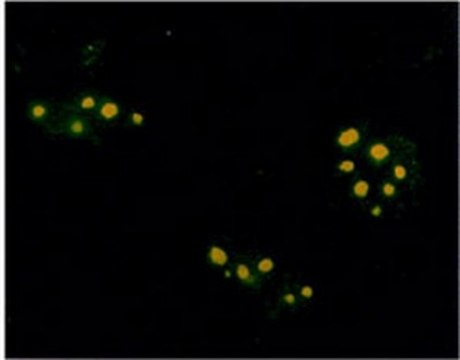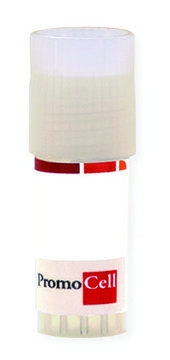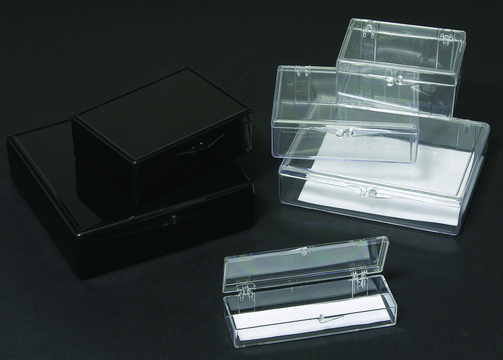推荐产品
生物来源
rabbit
质量水平
偶联物
unconjugated
抗体形式
affinity isolated antibody
抗体产品类型
primary antibodies
克隆
polyclonal
表单
buffered aqueous solution
分子量
antigen ~80 kDa
种属反应性
rat, mouse, human
浓度
~1.0 mg/mL
技术
immunoprecipitation (IP): 5-10 μg using lysate of rat brain
indirect immunofluorescence: 5-10 μg/mL using mouse 3T3 cells
western blot: 1-2 μg/mL using whole extract of HEK-293T cells expressing human Cullin 3
UniProt登记号
运输
dry ice
储存温度
−20°C
靶向翻译后修饰
unmodified
基因信息
human ... CUL3(8452)
mouse ... Cul3(26554)
rat ... Cul3(301555)
一般描述
Cullin 3 is a member of the cullin family of E3 ubiquitin protein ligases. Cullin 3 forms the BTB-Cul3-Rbx1 (BCR) ubiquitin ligase complex that contains a RING-box protein, Rbx1, and a BTB containing protein. Rbx1 binds to the C-terminus of cullin 3 through its RING-type zinc finger domain to recruit a ubiquitin-conjugating enzyme. The BTB containing protein binds cullin 3 at its N-terminus and functions as a cullin specific adaptor protein.
应用
Anti-Cullin 3 antibody produced in rabbit has been used in
- western blotting
- immunoprecipitation
- immunofluorescence
生化/生理作用
Cullin 3 (Cul3) acts as a key mediator of post-translational protein regulation. It functions as a scaffold protein that assemble multi-subunit ubiquitin ligase complexes which are responsible for the specific recognition and targeting of substrates for ubiquitin-dependent degradation by the 26S proteasome. Cul3 is required for degradation of the microtubule-severing protein MEI-1/katanin during transitioning from meiosis-to-mitosis phase. It forms a catalytically inactive BTB-Cul3-Rbx1 (BCR) ubiquitin ligase and becomes functional upon covalent attachment of the ubiquitin homologue neural-precursor-cell-expressed. BCR ubiquitin ligase down regulated 8 (Nedd8) near the C terminus of Cul3.
外形
Solution in 0.01 M phosphate buffered saline pH 7.4, containing 15 mM sodium azide.
免责声明
Unless otherwise stated in our catalog or other company documentation accompanying the product(s), our products are intended for research use only and are not to be used for any other purpose, which includes but is not limited to, unauthorized commercial uses, in vitro diagnostic uses, ex vivo or in vivo therapeutic uses or any type of consumption or application to humans or animals.
未找到合适的产品?
试试我们的产品选型工具.
储存分类代码
10 - Combustible liquids
闪点(°F)
Not applicable
闪点(°C)
Not applicable
个人防护装备
Eyeshields, Gloves, multi-purpose combination respirator cartridge (US)
法规信息
常规特殊物品
历史批次信息供参考:
分析证书(COA)
Lot/Batch Number
Lionel Pintard et al.
Nature, 425(6955), 311-316 (2003-09-19)
Many biological processes, such as development and cell cycle progression are tightly controlled by selective ubiquitin-dependent degradation of key substrates. In this pathway, the E3-ligase recognizes the substrate and targets it for degradation by the 26S proteasome. The SCF (Skp1-Cul1-F-box)
Missense variants in RHOBTB2 cause a developmental and epileptic encephalopathy in humans, and altered levels cause neurological defects in Drosophila
Straub J, et al.
American Journal of Human Genetics, 102(1), 44-57 (2018)
Matthew D Petroski et al.
Nature reviews. Molecular cell biology, 6(1), 9-20 (2005-02-03)
Cullin-RING complexes comprise the largest known class of ubiquitin ligases. Owing to the great diversity of their substrate-receptor subunits, it is possible that there are hundreds of distinct cullin-RING ubiquitin ligases in eukaryotic cells, which establishes these enzymes as key
Lionel Pintard et al.
The EMBO journal, 23(8), 1681-1687 (2004-04-09)
Cullin-based E3 ligases target substrates for ubiquitin-dependent degradation by the 26S proteasome. The SCF (Skp1-Cul1-F-box) and ECS (ElonginC-Cul2-SOCS box) complexes are so far the best-characterized cullin-based ligases. Their atomic structure has been solved recently, and several substrates have been described
J D Singer et al.
Genes & development, 13(18), 2375-2387 (1999-09-29)
Cyclin E is an unstable protein that is degraded in a ubiquitin- and proteasome- dependent pathway. Two factors stimulate cyclin E ubiquitination in vivo: when it is free of its CDK partner, and when it is phosphorylated on threonine 380.
我们的科学家团队拥有各种研究领域经验,包括生命科学、材料科学、化学合成、色谱、分析及许多其他领域.
联系技术服务部门
